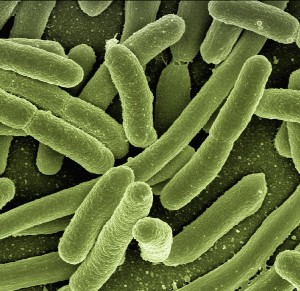Antibacterial and antibiofilm effects of gold and silver nanoparticles against the uropathogenic Escherichia coli by scanning electron microscopy (SEM) analysis

Accepted: 18 October 2023
HTML: 28
All claims expressed in this article are solely those of the authors and do not necessarily represent those of their affiliated organizations, or those of the publisher, the editors and the reviewers. Any product that may be evaluated in this article or claim that may be made by its manufacturer is not guaranteed or endorsed by the publisher.
Authors
Uropathogenic Escherichia coli (UPEC) is a nosocomial pathogen associated with urinary tract infections and biofilm formation, which contributes to antibiotic resistance. Discovering potent antibacterial agents is crucial. This study aimed to assess the antibacterial and antibiofilm effects of gold and silver nanoparticles on UPEC using Scanning Electron Microscopy (SEM). UPEC biofilms were cultivated on nitrocellulose membranes for 48 hours at 37°C, then treated with gold nanoparticles (50 ppm and 100 ppm) and silver nanoparticles (50 ppm and 100 ppm) for another 48 hours. Antibacterial and antibiofilm activities were evaluated through cell density and SEM analysis. SEM revealed lower cell density, reduced biofilm formation, and altered cell morphology with rough, wrinkled surfaces after nanoparticle treatment. In conclusion, gold and silver nanoparticles exhibit antibacterial and antibiofilm properties, as observed in SEM analysis. SEM is a valuable tool for studying the antimicrobial effects of nano gold and silver on bacterial cell morphology and biofilm populations.
How to Cite

This work is licensed under a Creative Commons Attribution-NonCommercial 4.0 International License.

 https://doi.org/10.4081/hls.2023.11748
https://doi.org/10.4081/hls.2023.11748



